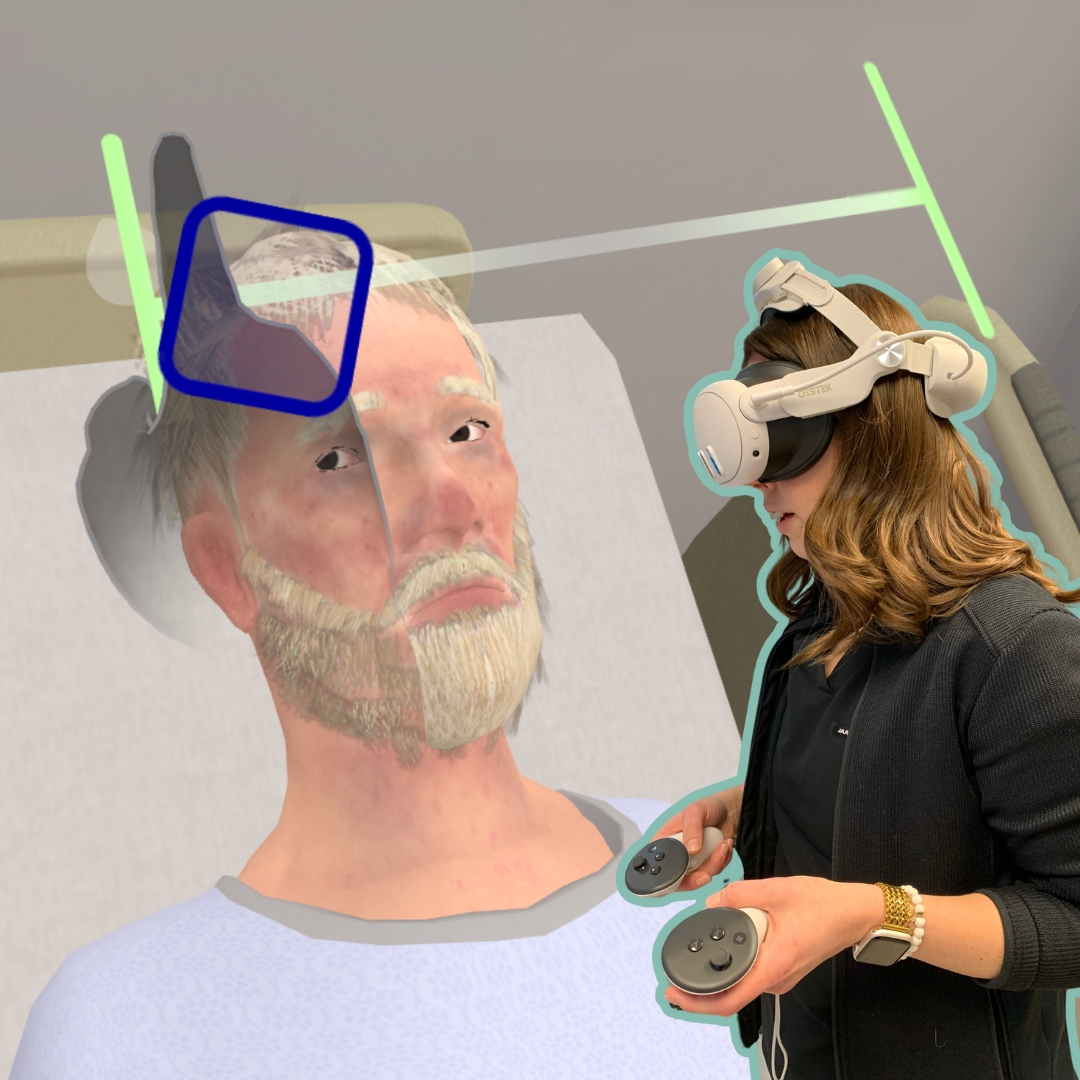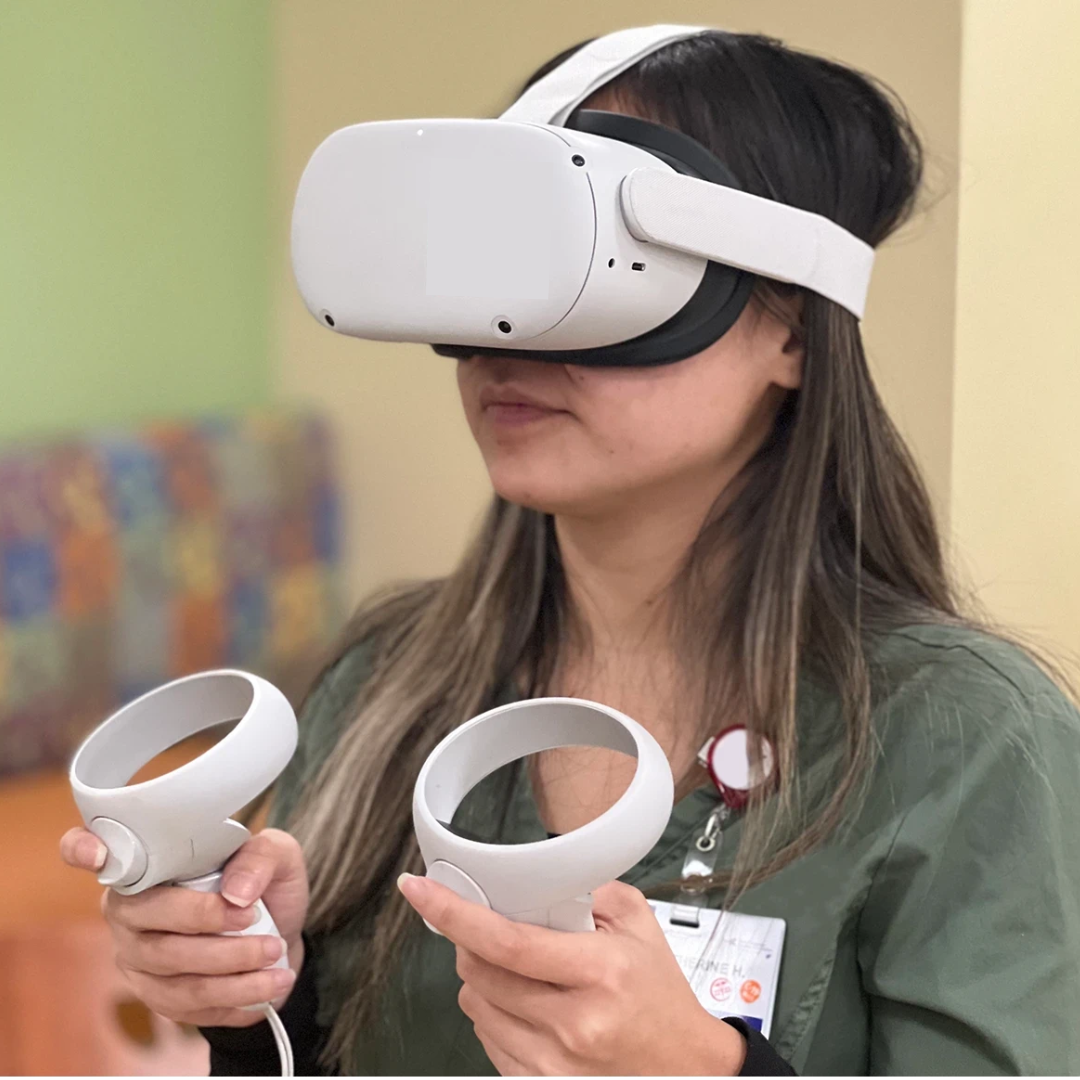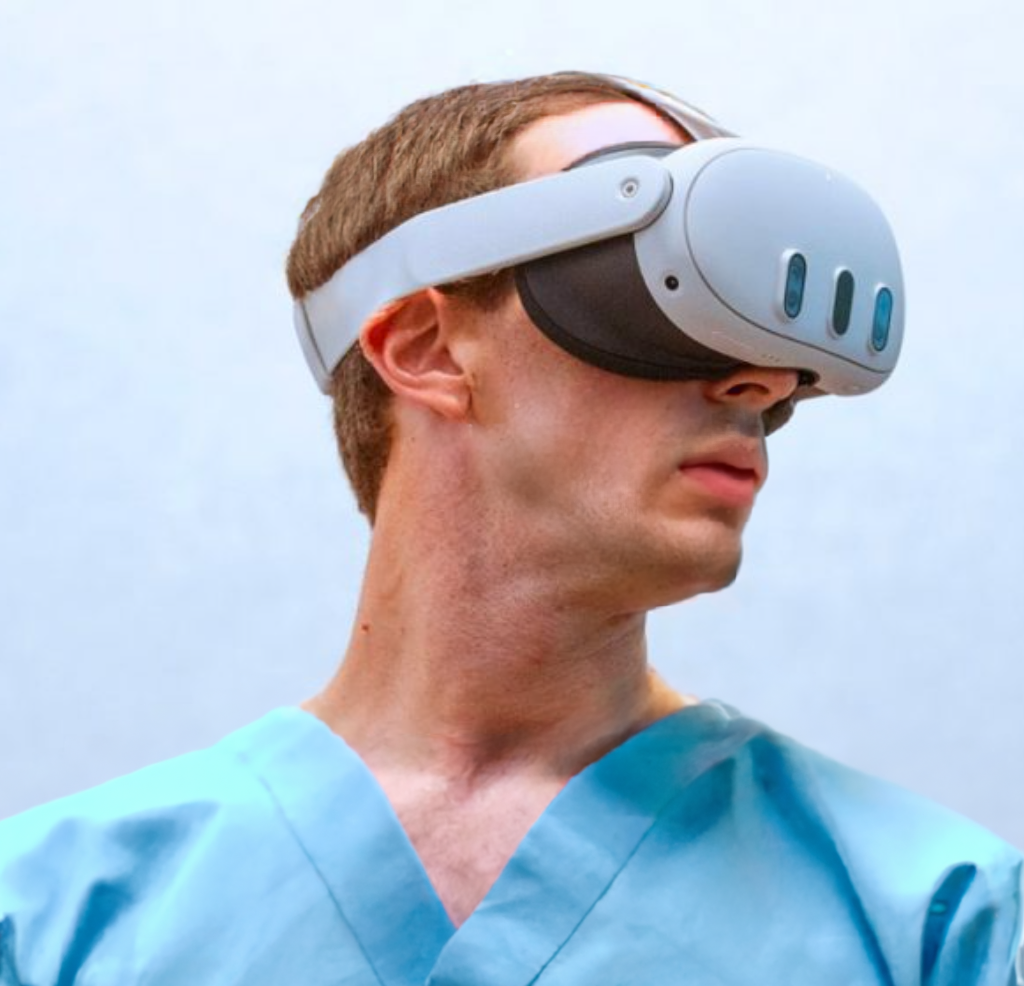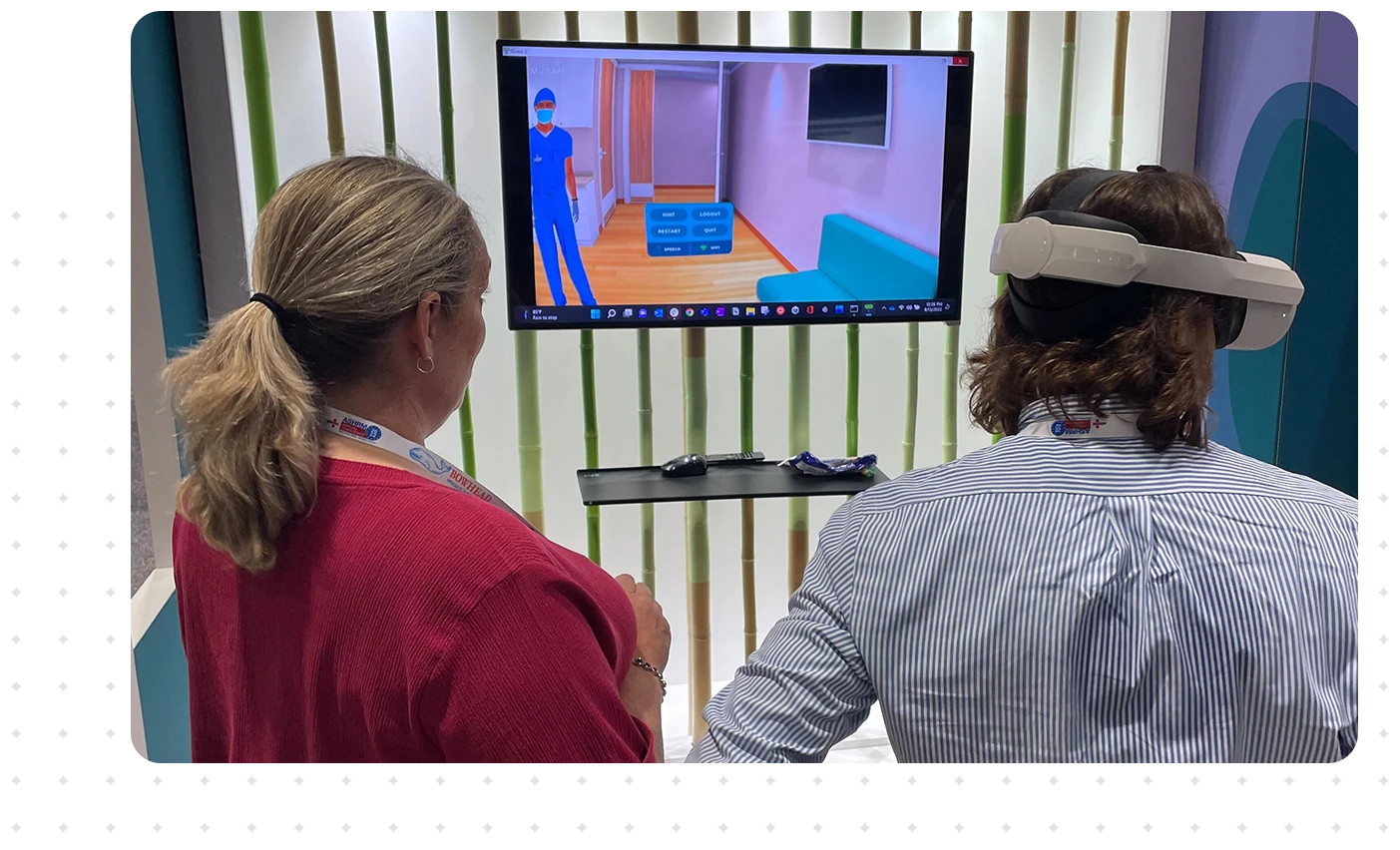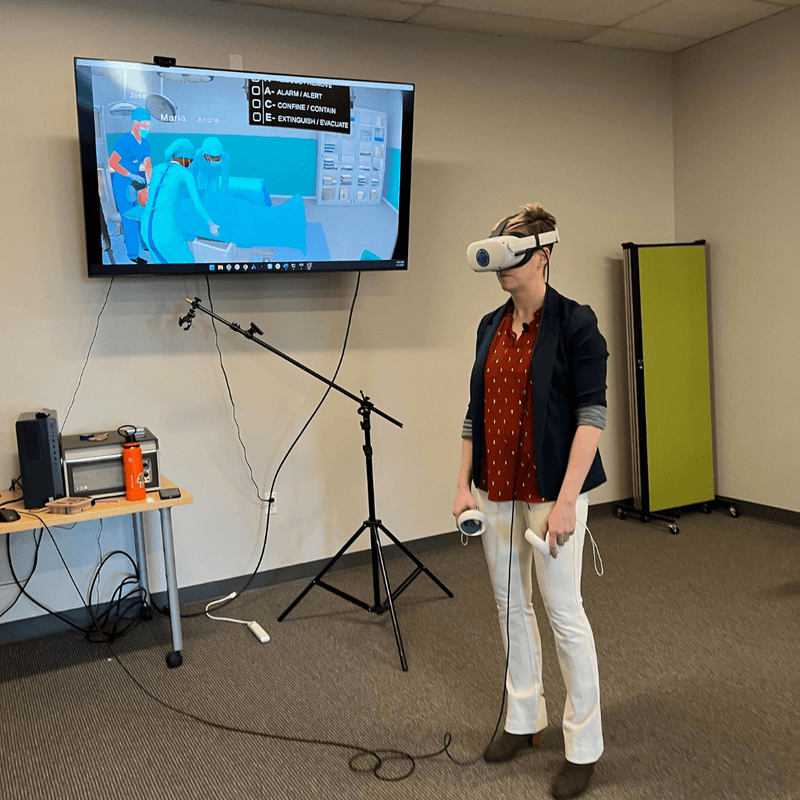
Leveraging Machine Learning for Voice-Led VR Training
Published March 2, 2023
Virtual reality (VR) training simulations in healthcare organizations increase employee engagement and retention as they accurately equip nurses and physicians to handle stressful scenarios and grow confidence in their skills. Voice-led VR applications provide even more benefits via a natural and immersive training experience.
Machine learning (ML) is the method of automation that drives voice-led VR technology. Let’s discuss how VR applications can be “voice-led” and how machine learning powers a positive voice-led VR training experience.
What Does “Voice-Led VR” Mean?
Clinicians don’t have the time or brain space to “learn a new way of learning.” They’re already feeling the pressure to pick up the slack and need a training option they can effectively use from the get-go.
At Health Scholars, we utilize a proprietary, patent-pending virtual reality training software that is “voice-led.” This means that instead of only using traditional input methods, like handheld controllers, a user utilizes closed loop communication.
This unique advantage gives users a natural way of preparing for high-risk situations like obstetric hemorrhages or life-altering strokes. Clinicians and patients all speak and interact with each other throughout the day, giving orders and relaying information. These training applications accurately replicate what a user will do in real life.
Voice-led VR training has a gradual, simple learning curve compared to other types of virtual reality. To make it even easier, we also designed a Team Lead role within our training courses; this person leads every user through initial orientation, new exercises, and more.
Now that we’ve established what “voice-led VR” means, let’s break down the processes behind it.
Voice-Led VR & Machine Learning 101
According to IBM, machine learning is a method of data analysis that automates analytical model building. It is a branch of artificial intelligence based on the idea that systems can learn from data, identify patterns, and make decisions with minimal human intervention.
In machine learning, “learning” really means “teaching.” Building a framework and data set teaches a machine how to improve over time. This process drives our unique voice-led VR training scenarios.
Here’s how it all works.
What’s Under the Hood
Machine learning effectively solves complex problems, like applying solutions to human speech interpretation or “natural language processing.”
Natural language processing (NLP) is a branch of artificial intelligence that helps computers understand, interpret, and manipulate human language – it draws from many disciplines, including computer science and computational linguistics, to fill the gap between human communication and computer understanding.
Interpreting voices is a complicated process. While we haven’t reached the point where we can simply write an algorithm that takes spoken audio and interprets it 100% correctly every time, machine learning helps create a bridge.
By providing a computer with various individual inputs and desired outputs, it can use ML algorithms to sort out complexities and plot paths forward.
In the context of Health Scholars’ virtual reality training scenarios, machine learning understands the voice commands and prompts the next action. As a useful tool that scales and improves our programs over time, the models take in new information and learn from it, evolving to become the next better version of itself.
Scalable Growth & Ongoing Improvement
Our team at Health Scholars has developed a virtual reality training program that uses an extensive database of words and transcriptions to help people learn interactively. We analyze user interactions to identify areas for improvement and expand the database accordingly. By collecting and analyzing samples of user speech, we can identify common speech patterns and words, which can be used to improve the training program.
The Health Scholars Model
We use a Natural Language Processing (NLP) system, a software program that analyzes, understands, and generates human language. We use specific medical terminology to adapt the NLP system to the healthcare industry.
Our self-directed programs allow users to learn at their own pace without needing a proctor, making them more flexible and cost-effective than traditional training programs.
Our team is always working to improve the program, and we are constantly exploring new features to enhance the user experience. For example, we’re currently working on improving background noise filtering and speaker isolation to make it easier to understand speech in noisy environments.
We take data security seriously and ensure that all information is encrypted and kept secure, both during transmission and while at rest.
The Future of Voice-Led VR Training
As innovators of voice-led VR training for healthcare, Health Scholars delivers unique immersive experiences that empower nurses and other clinicians to use their voices in vivid, replicated clinical environments, helping them to grow confidence.
When users repeatedly practice our training scenarios, they accurately prepare for real-life high-risk situations throughout the hospital, including the operating room and labor and delivery. Unique solutions for emergency care can be applied across various hospital departments. This repetition refreshes established education and helps staff comply with industry regulations.
Find out what makes our virtual reality training programs different. Ready to make measurable improvements in your clinical training? Let’s start a conversation.

